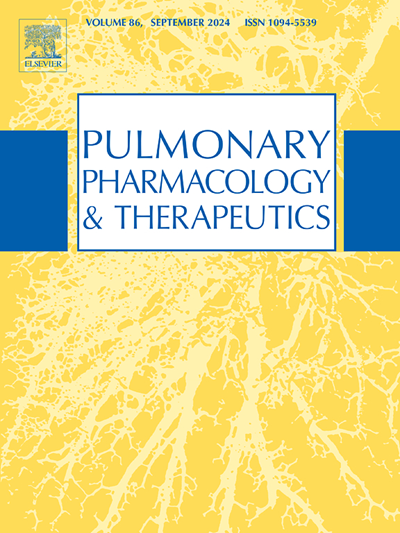从selexipag过渡到口服treprostiil治疗肺动脉高压的安全性和有效性:来自ADAPT登记的结果。
IF 2.8
3区 医学
Q2 PHARMACOLOGY & PHARMACY
引用次数: 0
摘要
口服曲前列素和硒西帕格是靶向前列环素途径的药物,已被批准用于治疗肺动脉高压(PAH)。在服用赛拉西帕格时出现不令人满意的临床反应或副作用的情况下,关于向口服曲前列素过渡的临床益处、安全性或策略的数据很少。使用来自ADAPT注册中心的前瞻性数据,我们旨在评估10名PAH患者从硒西帕格过渡到口服曲前列素的临床结果、安全性和过渡策略。方法SADAPT是一项前瞻性的、真实世界的、多中心的、基于美国的PAH患者注册,新开始口服曲前列素,患者队列(n = 10) 从selexipag过渡到口服曲前列素。感兴趣的PAH变量是从标准护理诊所就诊中收集的。从基线到最后一次随访,临床改善通过改良的REPLACE标准进行定义,风险通过REVEAL Lite 2进行评估。记录了真实世界的过渡战略。在过渡期的30天内对医疗保健利用率或PAH恶化进行评估。结果:甚至有患者因PAH恶化或硒西帕缺乏疗效而转变,有三名患者因耐受性问题而转变。根据改良的REPLACE标准,5名患者在从selexipag过渡到口服曲前列素后表现出临床改善。使用REVEAL Lite 2评估风险,从基线到最后一次随访,三名患者病情好转,五名患者保持风险类别。所有的转变都发生在门诊环境中,无论是突然停止/启动还是交叉滴定,都没有肠外曲前列素桥接。结论从硒西帕格向口服曲前列素的过渡是安全的,在没有肠外前列环素桥接的情况下进行,并导致一些患者的临床和分类风险得到改善。本文章由计算机程序翻译,如有差异,请以英文原文为准。
Safety and efficacy of transitioning from selexipag to oral treprostinil in pulmonary arterial hypertension: Findings from the ADAPT registry.
PURPOSE
Oral treprostinil and selexipag are drugs targeting the prostacyclin pathway and are approved for treatment of pulmonary arterial hypertension (PAH). In the setting of unsatisfactory clinical response or side effects while on selexipag, there is little data on clinical benefit, safety, or strategies on transitioning to oral treprostinil. Using prospective data from the ADAPT registry, we aimed to evaluate clinical outcomes, safety, and transition strategies in ten patients with PAH transitioning from selexipag to oral treprostinil.
METHODS
ADAPT was a prospective, real-world, multicenter, United States-based registry of patients with PAH newly started on oral treprostinil, with a cohort of patients (n = 10) transitioning from selexipag to oral treprostinil. PAH variables of interest were collected from standard-of-care clinic visits. Clinical improvement was defined by modified REPLACE criterion, and risk was assessed by REVEAL Lite 2 from baseline to last follow-up. Real world transition strategies were recorded. Healthcare utilization or worsening PAH was evaluated within 30 days of transitions.
RESULTS
Seven patients transitioned due to worsening PAH or lack of efficacy on selexipag, and three patients transitioned due to tolerability issues. Based on the modified REPLACE criterion, five patients demonstrated clinical improvement after transition from selexipag to oral treprostinil. Using REVEAL Lite 2 to assess risk, three patients improved and five patients maintained risk category from baseline to last follow-up. All transitions occurred in an outpatient setting either as abrupt stop/start or cross-titration, without parenteral treprostinil bridging.
CONCLUSION
Transition from selexipag to oral treprostinil was safe, performed without parenteral prostacyclin bridging, and resulted in clinical and categorical risk improvements in some patients.
求助全文
通过发布文献求助,成功后即可免费获取论文全文。
去求助
来源期刊
CiteScore
6.20
自引率
0.00%
发文量
41
审稿时长
42 days
期刊介绍:
Pulmonary Pharmacology and Therapeutics (formerly Pulmonary Pharmacology) is concerned with lung pharmacology from molecular to clinical aspects. The subject matter encompasses the major diseases of the lung including asthma, cystic fibrosis, pulmonary circulation, ARDS, carcinoma, bronchitis, emphysema and drug delivery. Laboratory and clinical research on man and animals will be considered including studies related to chemotherapy of cancer, tuberculosis and infection. In addition to original research papers the journal will include review articles and book reviews.
Research Areas Include:
• All major diseases of the lung
• Physiology
• Pathology
• Drug delivery
• Metabolism
• Pulmonary Toxicology.

 求助内容:
求助内容: 应助结果提醒方式:
应助结果提醒方式:


